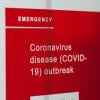Related Content
 |
Comparing 4 Top Cross-Browser Testing Frameworks The market is flooded with cross-browser testing frameworks, with more options than ever before. How should you decide which option is best to test your application for compatibility with different web browsers? Let’s take a look at four of the top open source solutions today and compare their benefits and drawbacks. |
|
 |
Lessons the Software Community Must Take from the Pandemic Due to COVID-19, organizations of all types have had to implement continuity plans within an unreasonably short amount of time. These live experiments in agility have shaken up our industry, but it's also taught us a lot of invaluable lessons about digital transformation, cybersecurity, performance engineering, and more. |
|
 |
The Evolution of Modern Testing: A Slack Takeover with Adam Sandman Thought leaders from the software community are taking over the TechWell Hub to answer questions and engage in conversations. Adam Sandman, director of technology at Inflectra, hosted this Slack takeover and discussed the main challenges testers face today, what modern users expect, and how to approach test automation. |
|
 |
Code Integration: When Moving Slowly Actually Has More Risk Many decisions about code branching models are made in the name of managing risk, and teams sometimes pick models that make integration harder in the name of safety. Moving slowly and placing barriers to change can seem safer, but agile teams work best when they acknowledge that there is also risk in deferring change. |
|
 |
Choosing the Right Threat Modeling Methodology Threat modeling has transitioned from a theoretical concept into an IT security best practice. Choosing the right methodology is a combination of finding what works for your SDLC maturity and ensuring it results in the desired outputs. Let’s look at four different methodologies and assess their strengths and weaknesses. |
|
 |
3 Software Testing Lessons from an Unlikely Source With people trying to stay isolated as much as possible due to COVID-19, going to the grocery store suddenly became something to strategize. At least making a plan, prioritizing risk, and being agile are business as usual for software testers. Here are some of the top lessons testers can learn from our current situation. |
|
 |
Fearless Refactoring, Not Reckless Refactoring Fearless refactoring is the agile concept that a developer should be able to incrementally change code without worrying about breaking it. But it's not believing that you don't need a safety net to detect and correct defects quickly when changes are made—that's just reckless. Here's how to avoid reckless refactoring. |
|
 |
Defensive Design Strategies to Prevent Flaky Tests Flaky tests could be the result of issues in the code, but more often they are due to assumptions in the test code that lead to non-relatable results. There are many reasons that tests can fail intermittently, and some can be easily avoided by applying good defensive design strategies. It's all about making your code agile. |







